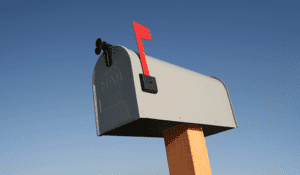 Learn about automotive mailing lists
Learn about automotive mailing lists
Reach automotive owners with automotive mail lists, sometimes known as “DMV mailing lists.” Mailing lists reach vehicle owners for marketing purposes. Some of the most common types of vehicle owner mailing lists reach:
- Lists of BMW, Audi or Mercedes-Benz owners
- Ford car or truck owners lists
- Lists of Chevrolet car or truck owners
- Honda, Acura, Toyota or Lexus owner lists
- Lists of Jeep, Chrysler or Dodge owners
Automotive mailing lists data sources
The DPPA and Shelby Amendment are important to understand: Automotive mail marketing lists may or may not come from state’s Department of Motor Vehicles (DMVs). In fact, they probably don’t! Vehicle owner lists aren’t usually sourced from DMVs in part because of the Driver’s Privacy Protection Act (DPPA). Congress enacted it as an amendment to 103 H.R. 3355, the Violent Crime Control and Law Enforcement Act of 1994. The DPPA protects the privacy of drivers. The Shelby Amendment changed it in 2000. In some cases, this is how some vehicle owner mailing lists exist today.
The Shelby Amendment requires states to obtain a driver’s consent before giving out any personal information. This is for an individual or in bulk. Most vehicle owner mailing lists do not come from DMV records, however. In fact, most high-quality mailing lists today come from multiple data sources. These sources include automobile service chains and dealerships. These lists, sourced from multiple databases, tend to be more accurate with more coverage.
Today, many automotive mailing lists come from multiple sources including self-reported data from websites. It also comes from financial and insurance companies, dealerships, automotive service chains and national OEM ownership clubs and lists.
What makes automotive mailing lists unique
Automotive mailing lists are significantly different from other types of mailing lists. The main difference is vehicle data.
Look for these fields in your mailing list file. These are an absolute minimum requirement:
- Vehicle year, make and model, submodel if available
- Geographic select (state, county, radius around address)
- First and last name
- Street address, city, state, postal (ZIP) code including ZIP+4, formatted to comply with the USPS Coding Accuracy Support System (CASS™). CASS improves the accuracy of a mailing list by using software to match to 5-digit ZIP coding, ZIP + 4 delivery point (DP) coding, carrier route coding, DPV® or DSF2®, LACSLink®, SuiteLink®, eLOT® and RDI™
- Delivery Point Validation (DPV)
A note about “predictor” automotive mailing lists
Modeled or predictor mailing lists use consumer data, combined with statistical modeling. This “predicts” what is in a consumer’s garage. In fact, these lists can sometimes be based on data that contains personally identifiable information (PII) but are not allowed to be used as-is due to privacy concerns. This means the purpose of some predictor lists is to actually add additional error to avoid regulations and data restrictions! It is important to ask questions before using a “predictor” automotive mailing list.
Fields available in mailing lists
These fields or types of information should be available upon request. Sometimes these fields have an additional charge. Mailing list providers call these additional fields “selects.”
- Automotive do-it-yourself (DIY) activity
- Odometer reading
- Number of vehicles in the household
- Title of recipient if available (Dr., Mr., Mrs., etc.) or suffix (Jr., IV, II, Sr., etc.)
- VIN code of the vehicle
- Date of last National Change of Address (NCOA) processing
- Phone number when available
- Email address when available
- Demographic information of the household including ethnicity
- Type of fuel: gasoline, diesel, electric, etc.
- Vehicle body type
- Last validation date
- Presence of children in the household
- Household income
Other optional types of fields are available. Discuss this with your automotive mailing list service provider.
Lists have an expiration date
Americans move fairly frequently! Count on around 8% of the people on a mailing list moving within 12 months. According to the US Census Bureau, in 2021, 8.4% of the population moved to a new residence, down from 9.3% in 2020. That means after three years, one quarter of a mailing list will be outdated.
Automotive mailing list accuracy
Mailing lists on the market today typically range from 75% accuracy up to 98% accuracy. It depends on the sources of the data and the database update frequency. Lists on the lower end of the accuracy range tend to rely on DMV data. These only come from certain states. These lists are often the cheapest, too. They probably haven’t been verified through NCOA.
Multiple sources of consumer and vehicle data go into lists on the higher end of the accuracy range. These lists go through regular updates, usually weekly. Ask your list provider for their database update frequency.
Identify low-quality list providers
Low-quality list providers waste your money. Fortunately, they’re easy to identify. Here things to look for to steer you away from low-quality lists.
One clue is the automotive list provider’s website: Does it list a street address? Can you verify in Google that the street address exists? If you find a location is it a UPS store or other non-governmental postal mailbox provider? Often times a business will get a postal mail box, a “PMB” at a UPS store to have the appearance of a street address in an office.
Did you receive an unsolicited email from a list provider? Is the list provider marketing to you with a generic email address? Look for a street address listed in the email. Does the list provider specialize in automotive mailing lists or is it one of several dozen types of lists available? Is the mailing list provider a member of industry trade associations like SEMA, the Auto Care Association or AASA?
Directly related to accuracy is the deliverability rate. Ask your list provider if the deliverability is guaranteed. It is not unreasonable to have a postal mailing list with a deliverability guarantee of 95% to 98%, meaning 5% to 2% of the mailed pieces are not delivered to the recipient.
How to purchase mailing lists
First, look at our list of mailing list providers. Call them and ask questions about their data. Ask how often the data is updated and ask about the sources of automotive data. The more questions you ask, the more educated you’ll be when purchasing your mailing list.
Years ago, mailing lists used to be for rental only, and for a one-time use only. Today, you usually buy lists outright. It’s OK to use them multiple times. Ask your list vendor if the list you are considering is available for rent, or for purchase.
Usually your postal mailing lists come as Excel files, .csv files or .txt files. If you are using a mailing list from an Excel file or .csv file, watch for the typical “leading zero” error. For example, a ZIP code from the east coast is likely to begin with a zero, like “02101” for Boston. If the field setting is not correct that ZIP code may be truncated to “2101” instead, which is an invalid ZIP code.
The same can be true for other fields including Delivery Point Validation (DPV) or ZIP+4 fields if not included in the main ZIP code field. For example, some mailing lists have the ZIP+4 in a separate field. In the case of a ZIP code like “44236-0102” if the “0102” is in a separate field and the setting is not correct to include a leading zero the field may be truncated to “102” which is an invalid ZIP+4 record.
Typical mailing list costs
Mailing lists are usually sold “per thousand” names, which can also look like “per M” or “$/M”. “M” is the traditional print shop way to abbreviate one thousand. It comes from the Roman numeral for 1,000. Lists are also priced at cents per record. If a list is $130 per thousand or $130/M, that’s the same as 13 cents per record or $0.13 per record.
Adding additional “selects” to a mailing list such as VIN codes, email, phone numbers, etc., usually increases the cost of a list.
Mailing list costs for vehicle owner postal lists can range from $75 per thousand up to $140 per thousand (7.5 cents per record to 14 cents per record). This usually depends on the number of selects. Sometimes you get what you pay for: Cheaper lists may have more undeliverable records. That means the printing and postage you paid for is wasted and offsets paying less for the cheap mailing list. Ask your mailing list provider about deliverability rates.
Email mailing lists usually cost more than postal lists. These are usually not sold outright. They’re usually sold as a service. This means you pay an email company and they send emails on your behalf. Emails usually range from $100/M up to $300/M depending on how specialized the list can be. Don’t use lists sold outright for real cheap. These lists area compiled from poor sources. Also, they’re probably overused by the time you get them. Email companies often limit direct access to email lists to prevent abuse and to maintain list hygiene by monitoring soft and hard bounces.
Aftermarket sources for automotive mailing lists
To see sources of lists, see our list of mailing list service providers, here.
Sources: https://postalpro.usps.com/certifications/cass, mailing list FAQs.
